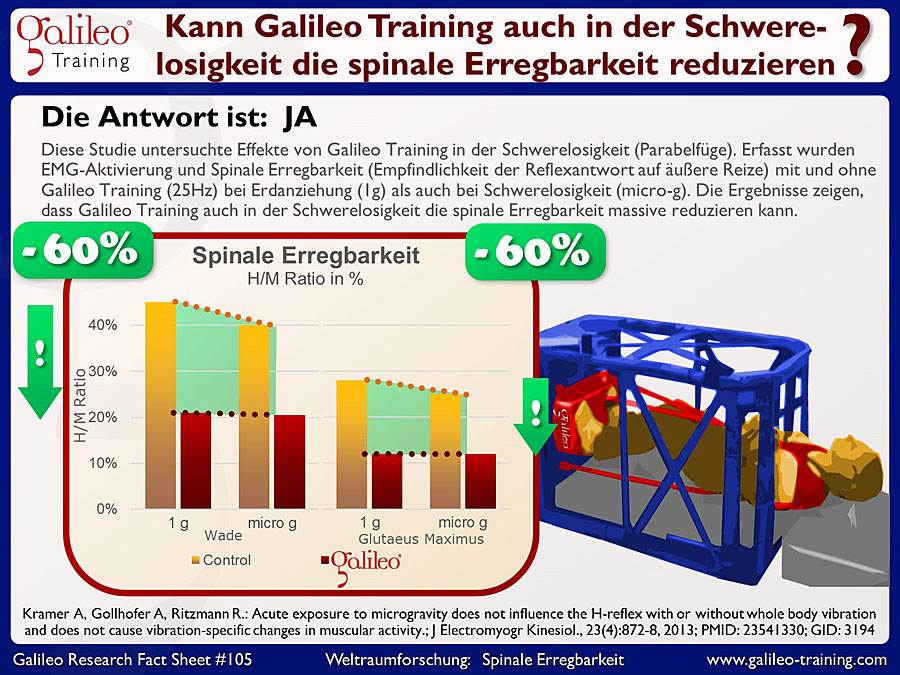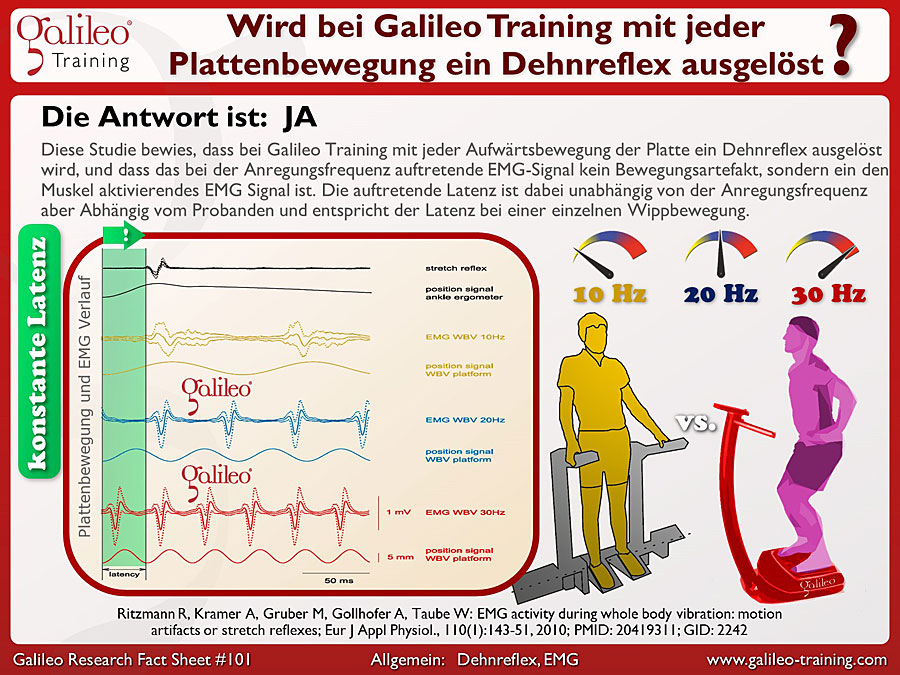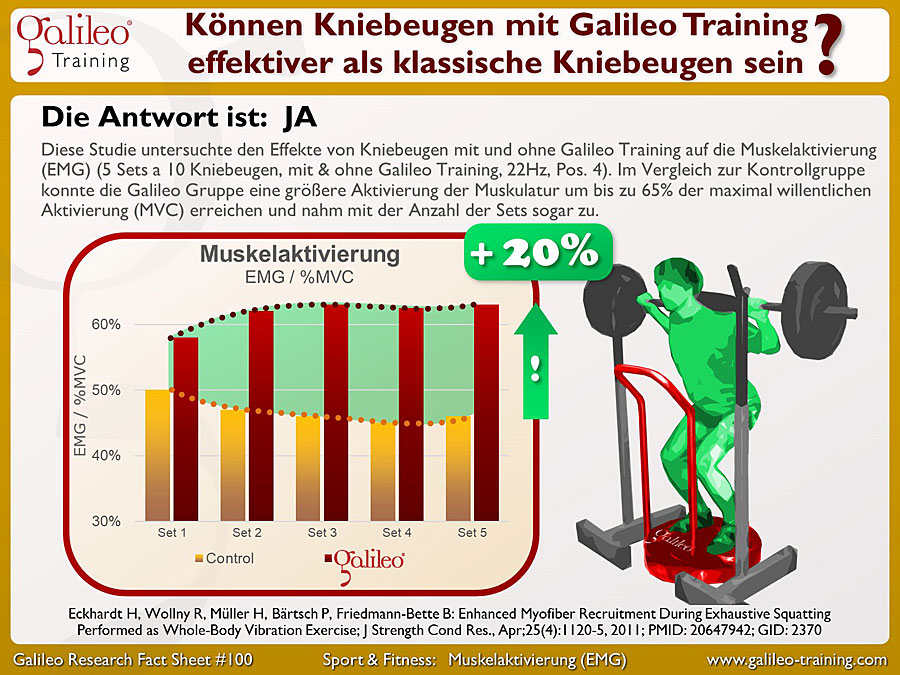This study investigated short-term effects of Galileo Training on movement efficiency (30Hz, Pos. 2, 1 min., 10% knee angle, fore-foot stance, 2x8 repetitions). The maximum ankle torque and muscle activation (EMG) was tested. After the Galileo application the torque was constant but muscle activation as well as co-contraction was decreased and hence movement efficiency was increased significantly...
This study reported the short-term effects of Galileo Training on muscle activation and exhaustion (26Hz, 90° dynamic squats, Pos. 6, 40% body weight extra load, subjective exhaustion). The control group received identical exercises without Galileo. The Galileo groups showed higher training effects (increase lactate +205% instead of +160%) in significantly shorter time (349s instead of 515s) plus increased muscle activation...
This study investigates the effects of exhaustive squats with and without Galileo Training on muscle activation (EMG) (5*10 Sets deep squats, with & without Galileo Training, 22Hz, pos. 4, extra weight: 10RM = 60% Body mass). Compared to the control group without vibration the Galileo Group could almost triple muscle activation (+196%) during eight repetitions...
This study tested muscle activation (EMG) of different muscles of the leg at different frequencies between 5 and 30Hz (pos. 5, slightly flexed legs). It showed that high frequencies (25-30Hz) can increase muscle activation by up to 5.5 times compared to low frequencies at 5Hz. Therefore Galileo Training targeting muscle hypertrophy and muscle power should be using high frequencies above 20 Hz to increase muscle activation...
This study tested the effects of Galileo Training in micro-gravity conditions (parabolic flights). The muscle activation (EMG) and the Spinal Excitability (sensitivity of reflexes reacting on an external stimulus) was assessed with and without Galileo Training (25Hz) in normal gravity (1g) and micro-gravity (micro g). The results prove that Galileo Training can significantly decrease Spinal Excitability even in micro-gravity...
This study proved that Galileo Training triggers a stretch reflex with each upwards movement of the platform. It also proved that the EMG signal corresponding to the vibration frequency is not a motion artifact but an actual activation of the corresponding muscle. The measured latency is therefore not dependent on the vibration frequency but on the individual and is identical with the latency caused by one single tilt movement...
This study proved that Galileo Training triggers a stretch reflex with each upwards movement of the platform. It also proved that the EMG signal corresponding to the vibration frequency is not a motion artifact but an actual activation of the corresponding muscle. The measured latency is therefore not dependent on the vibration frequency but on the individual and is identical with the latency caused by one single tilt movement...
This study investigates the effects of different tilt-angles of the hip during Galileo Training on muscular activation (EMG) (10 sec., 0Hz/10HZ/20Hz, pos. 2, legs slightly flexed). The results show that muscular activation is strongly dependent on posture. The observed effects during Galileo Training depend on the tested muscle groups as well as frequency and can be as high as 2250%...
This study investigates the effects of different frequencies during Galileo Training on muscular activation (EMG) (10 sec., 0Hz/10HZ/20Hz, pos. 2, legs slightly flexed). The results show that increasing frequencies cause increasing muscular activation. The observed effects during Galileo Training depend on the tested muscle groups as well as posture and can be as high as 2250%...
This study examines the activation (EMG) of different muscles of the back during Galileo Training at different knee angles. It shows that Galileo activates the muscles of the back up to 18% higher than just standing in the same position. Muscles of the back were activated up to 27% of the maximum voluntary contraction (MVC). Galileo Training therefore significantly increases muscle activation of the back...









